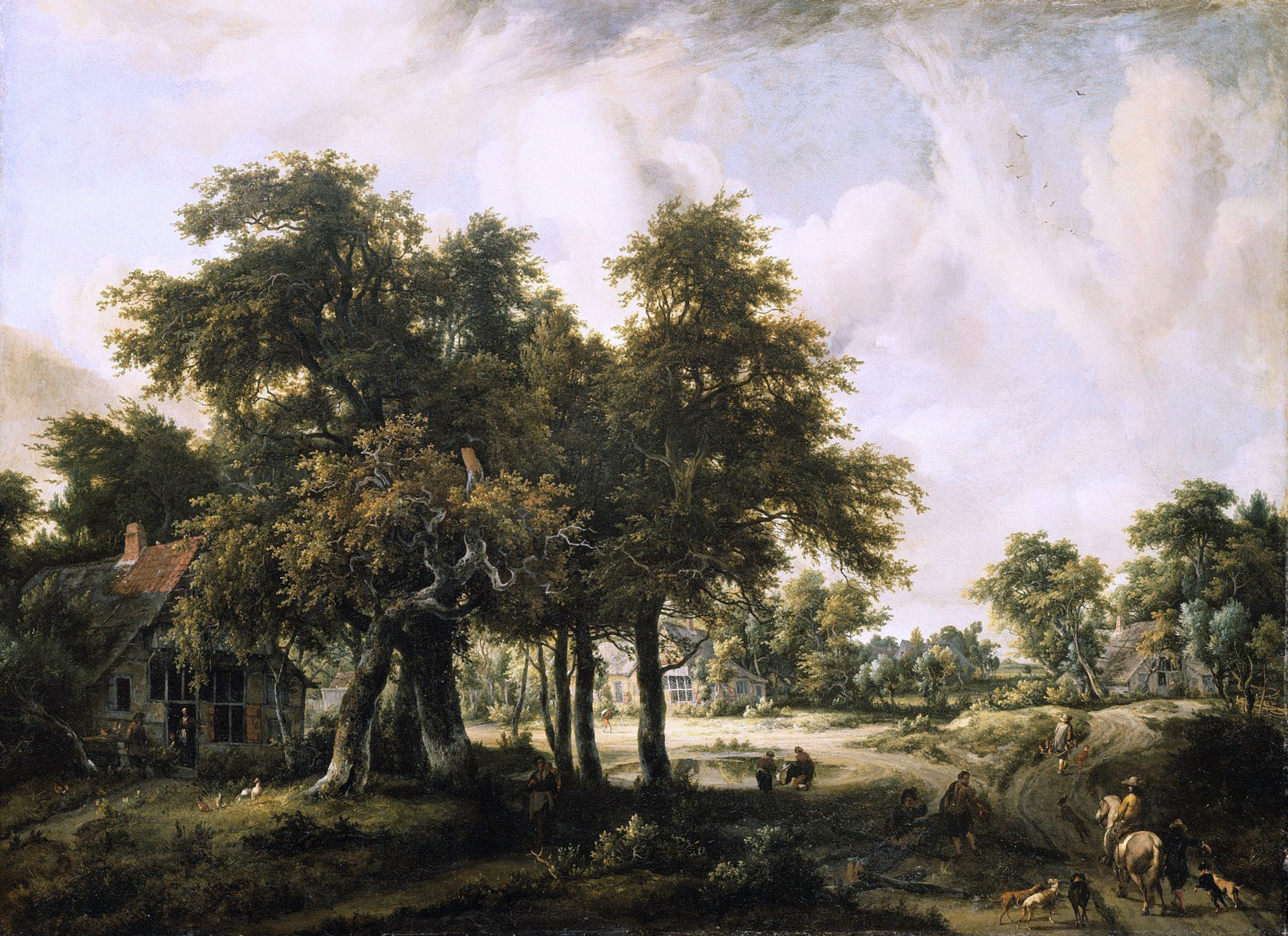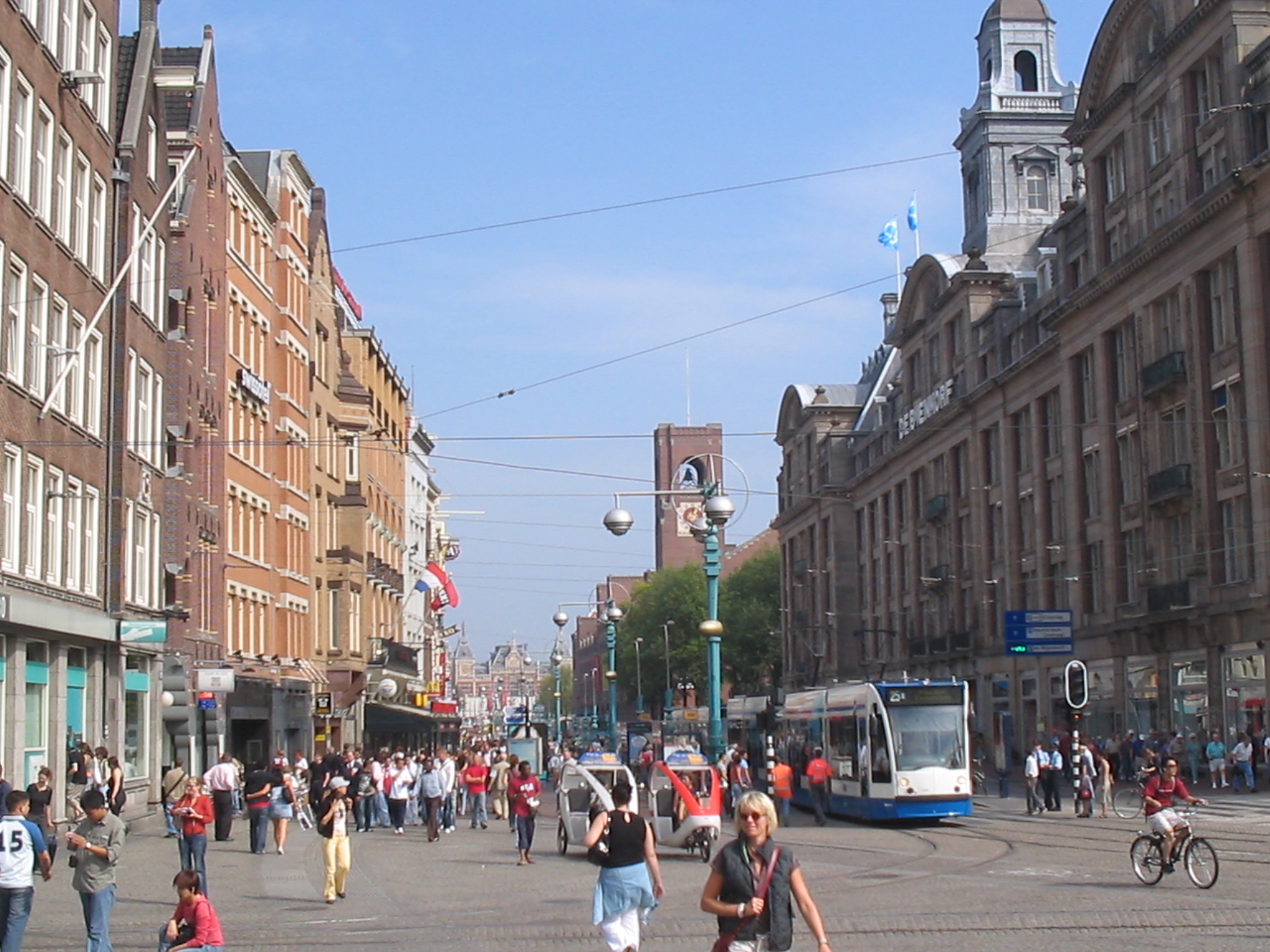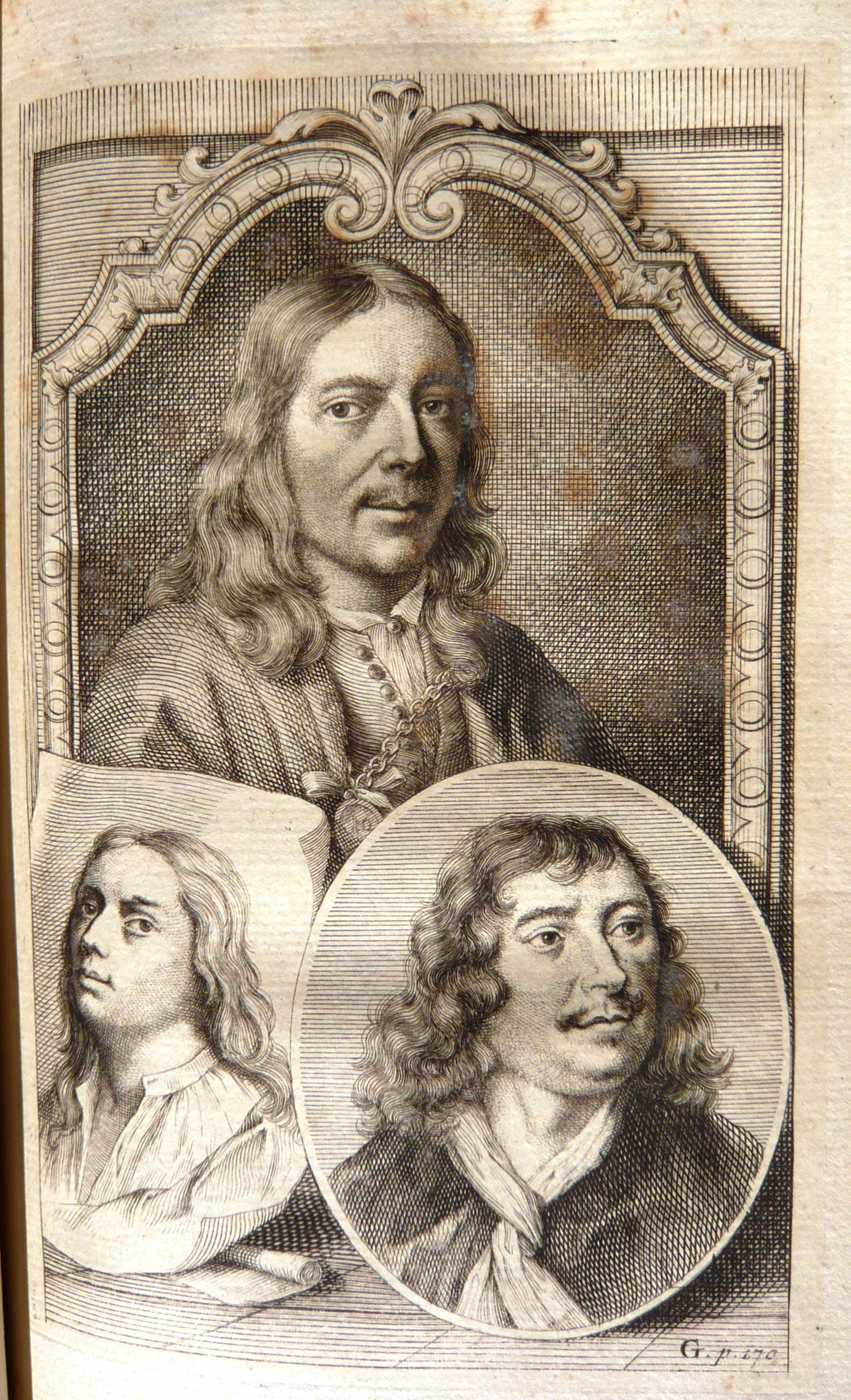|
Rozengracht
The Rozengracht is a street in the Jordaan neighbourhood of Amsterdam. It runs between the Prinsengracht at the Westermarkt and the Singel canal at De Clercqstraat. The name means "Rose canal". The Rozengracht is one of the six former canals in the Jordaan. The reasons for filling in the 17th-century canal in 1890 were poor hygiene from polluted water, and the need for a broad exit road to the new neighborhoods west of the Singel canal. De Clercqstraat was built in 1895 as a westward extension of the Rozengracht. To the east, in the direction of the Dam, the street continues into Raadhuisstraat. Rozenstraat runs parallel to the Rozengracht. Famous residents *The painter Rembrandt van Rijn spent his last thirteen years of life, from 1656 to 1669, on the Rozengracht, in a building near the Lijnbaansgracht. *The tobacco pipe maker Eduard Bird (c. 1610–65) owned two adjoining houses on the Rozengracht between the two middle bridges. *Other people who lived on Rozengracht incl ... [...More Info...] [...Related Items...] OR: [Wikipedia] [Google] [Baidu] |
Jordaan
The Jordaan is a neighbourhood of the city of Amsterdam, Netherlands. It is part of the borough of Amsterdam-Centrum. The area is bordered by the Singelgracht canal and the neighbourhood of Frederik Hendrikbuurt to the west; the Prinsengracht to the east; the Brouwersgracht to the north and the Leidsegracht to the south. The former canal Rozengracht (now filled in) is the main traffic artery through the neighbourhood. Originally a working-class neighbourhood, the Jordaan has become one of the most expensive, upscale locations in the Netherlands. It is home to many art galleries, particularly for modern art, and is also dotted with speciality shops and restaurants. Markets are held regularly at Noordermarkt, the Westerstraat (the Lapjesmarkt textile market) and Lindengracht. Rembrandt spent the last years of his life in the Jordaan, on the Rozengracht canal. He was buried in the Westerkerk church, at the corner of Rozengracht and Prinsengracht, just beyond the Jordaan. The Ann ... [...More Info...] [...Related Items...] OR: [Wikipedia] [Google] [Baidu] |
Eduard Bird
Eduard Bird (or Edward/Evert Burt; c. 1610 – 20 May 1665) was an English tobacco pipe maker who spent most of his life in Amsterdam. His life has been reconstructed by analysis of public registers, probate records, and notary and police records, by historians such as Don Duco and Margriet De Roever from the 1970s onwards. Pipes with the "EB" stamp have been found around the world. Early years (c, 1610–1638) Eduard Bird was one of many Europeans who sought refuge in Amsterdam in the early 17th century. He left England in 1624 to "fight for Holland". By 1630 he was living in Amsterdam according to the first document that gives evidence of his life, a document announcing his marriage. Don Duco states that he was twenty at this time and would have needed his parents' permission to marry. In the banns of marriage he said they were dead. However, Margriet De Roever states that his age and the names of his parents were not recorded on the banns. The banns list Bird as a pipe maker w ... [...More Info...] [...Related Items...] OR: [Wikipedia] [Google] [Baidu] |
Lijnbaansgracht
Lijnbaansgracht () is a partly filled-in canal in Amsterdam which bends beyond the boundary of the center, Amsterdam-Centrum. The canal runs parallel to the Singelgracht, between the Brouwersgracht and the Reguliersgracht. History The Lijnbaansgracht is named after the ropewalks ("lijnbanen") of the ropemakers, which needed a lot of space and were located here on the former edge of the city. Construction of the canal started in 1612 during the first stages of the construction of the canal belt. Filled in parts The Lijnbaansgracht ran through the Schans to the Muiderpoort until the 19th century. In the 19th century parts were filled in, overclocked or overlaid. *The Raamplein and the Raamdwarsstraat are on the filled in part between the Passeerdersgracht and the Leidsegracht (between Lijnbaansgracht 217 and 219). *The Leidseplein and the adjacent Kleine Gartmanplantsoen lie on the filled in part between Lijnbaansgracht 243 and nr. 245. The work around the Kleine-Gartmanpla ... [...More Info...] [...Related Items...] OR: [Wikipedia] [Google] [Baidu] |
Meindert Hobbema
Meindert Lubbertszoon Hobbema (bapt. 31 October 1638 – 7 December 1709) was a Dutch Golden Age painter of landscapes, specializing in views of woodland, although his most famous painting, ''The Avenue at Middelharnis'' (1689, National Gallery, London), shows a different type of scene. Hobbema was a pupil of Jacob van Ruisdael, the pre-eminent landscape painter of the Dutch Golden Age, and in his mature period produced paintings developing one aspect of his master's more varied output, specializing in "sunny forest scenes opened by roads and glistening ponds, fairly flat landscapes with scattered tree groups, and water mills", including over 30 of the last in paintings. The majority of his mature works come from the 1660s; after he married and took a job as an exciseman in 1668 he painted less, and after 1689 apparently not at all. He was not very well known in his lifetime or for nearly a century after his death, but became steadily more popular from the last decades of t ... [...More Info...] [...Related Items...] OR: [Wikipedia] [Google] [Baidu] |
Prinsengracht
The Prinsengracht is a -long canal that runs parallel to the Keizersgracht in the center of Amsterdam. The canal, named after the Prince of Orange, is the fourth of the four main canals belonging to the canal belt. History Construction started in 1612 on the initiative of Mayor Frans Hendricksz. Oetgens, after a design by city carpenter Hendrick Jacobsz Staets and city surveyor Lucas Jansz Sinck. The part between the Leidsegracht and the Amstel was developed during the city explanation of 1658. The section to the east of the Amstel was constructed during the last expansion. This part was named Nieuwe Prinsengracht. The Korte Prinsengracht is in the extension of the Prinsengracht between the Brouwersgracht and the Westerdok. Architecture and monuments There are many monuments and monumental canal houses on the Prinsengracht, including: * A crow-stepped gable on the corner with the Brouwersgracht at Prinsengracht 2–4. * The van Brienenhofje, or Rk. St Van Brienens Found ... [...More Info...] [...Related Items...] OR: [Wikipedia] [Google] [Baidu] |
List Of Streets In Amsterdam
List of streets in Amsterdam A * Anjeliersgracht Now named Westerstraat, the street filled in in 1861. D *Damrak * De Clercqstraat E *Elandsgracht F *Ferdinand Bolstraat G * Goudsbloemgracht H *Heiligeweg J * Jodenbreestraat K *Kalverstraat * Kromme Waal L * Lindengracht M *Markengracht *Marnixstraat is a main street in Amsterdam. A large bus depot and the main police station are located on the street. * Martelaarsgracht N *Nes (Amsterdam) * Nieuwe Achtergracht *Nieuwendijk, Amsterdam * Nieuwezijds Achterburgwal * Nieuwezijds Voorburgwal P * P.C. Hooftstraat * Palmgracht *Prins Hendrikkade R * Raadhuisstraat * Rapenburg (Amsterdam) *Rokin *Rozengracht S *Sarphatistraat * Scheepstimmermanstraat *Singel *Sint Antoniesbreestraat * Spiegelgracht * Spuistraat V * Vijzelgracht W *Warmoesstraat * Westerstraat Z *Zeedijk Zeedijk (''English'': "Sea dike") is a street in the old centre of Amsterdam. The street is the northern and eastern boundary of De Wallen red-ligh ... [...More Info...] [...Related Items...] OR: [Wikipedia] [Google] [Baidu] |
De Clercqstraat
The De Clercqstraat is a street in Amsterdam-West, Netherlands. It runs between the Singelgracht and . The street is named for Willem de Clercq (1795–1844), poet and Christian revivalist. Before construction of the De Clercqstraat at the end of the 19th century, it was the site of a canal, the Lange Bleekerssloot, which was filled in during 1895. The Rozengracht, the extension of De Clercqstraat on the eastern end, was filled in at the same time and a passage towards the Dam, the Raadhuisstraat, was cleared, creating a new axial road connecting the city centre with the newer districts towards the West. See also *List of streets in Amsterdam List of streets in Amsterdam A * Anjeliersgracht Now named Westerstraat, the street filled in in 1861. D *Damrak * De Clercqstraat E *Elandsgracht F *Ferdinand Bolstraat G * Goudsbloemgracht H *Heiligeweg J * Jodenbreestraat K *Kalverstr ... Amsterdam-West Streets in Amsterdam {{Netherlands-road-stub ... [...More Info...] [...Related Items...] OR: [Wikipedia] [Google] [Baidu] |
Marnixstraat
Marnixstraat is a main street in the Dutch city of Amsterdam , on the western border of the Jordaan in the Amsterdam-Centrum. The street is located between Haarlemmerplein and Leidseplein, parallel to Lijnbaansgracht. History Marnixstraat is a main street in Amsterdam which was named after Philips of Marnix, Lord of Saint-Aldegonde, (1538-1598). A large bus depot ( Busstation Elandsgracht) and the main police station are located on the Marnixstraat. The street is located between Haarlemmerplein and Leidseplein, parallel to Lijnbaansgracht. It is from Amsterdam Centraal station. The street is used to host events like the 2022 Pride events. The street also has a Tram line: Trams 7, 10 and 14 all make stops at the Elandsgracht tram stop on the street. In 2017 the city of Amsterdam began making plans to make the Marnixstraat a bicycle street. The plan was to make the street into a bicycle first street, "...where cars are welcome, but must behave like a guest." See also *List of ... [...More Info...] [...Related Items...] OR: [Wikipedia] [Google] [Baidu] |
Rembrandt
Rembrandt Harmenszoon van Rijn (, ; 15 July 1606 – 4 October 1669), usually simply known as Rembrandt, was a Dutch Golden Age painter, printmaker and draughtsman. An innovative and prolific master in three media, he is generally considered one of the greatest visual artists in the history of art and the most important in Dutch art history.Gombrich, p. 420. Unlike most Dutch masters of the 17th century, Rembrandt's works depict a wide range of style and subject matter, from portraits and self-portraits to landscapes, genre scenes, allegorical and historical scenes, biblical and mythological themes and animal studies. His contributions to art came in a period of great wealth and cultural achievement that historians call the Dutch Golden Age, when Dutch art (especially Dutch painting), whilst antithetical to the Baroque style that dominated Europe, was prolific and innovative. This era gave rise to important new genres. Like many artists of the Dutch Golden Age, such a ... [...More Info...] [...Related Items...] OR: [Wikipedia] [Google] [Baidu] |
Adam Pynacker
Adam Christiaensz Pynacker or Pijnacker (15 February 1622, Schiedam - buried 28 March 1673, Amsterdam ) was a Dutch Golden Age painter, mostly of landscapes. Biography Pynacker was the son of a wine merchant, who was a member of the ''vroedschap'', or city regency. He travelled to Italy and was gone for three years. In 1658 he converted to Catholicism in order to marry Eva Maria de Geest, Wybrand de Geest's daughter. Two years later his portrait was painted by his father-in-law as a pendant to an earlier portrait of his wife. In Schiedam he baptized two children, but from 1661 until he died, he lived on the Rozengracht in Amsterdam. Wedding portraits De Geest was a highly successful portrait painter who painted his daughter in 1652 and two years after their marriage he painted his new son-in-law's portrait in a matching style as pendant: File:Wybrand de Geest - Adam Joseph Pynacker.jpg, Adam Pynacker, by his father-in-law File:Wybrand de Geest - Eva de Geest.jpg, Eva de Geest, ... [...More Info...] [...Related Items...] OR: [Wikipedia] [Google] [Baidu] |
Johannes Lingelbach
Johannes (or Johann) Lingelbach (1622–1674) was a Dutch Golden Age painter, associated with the second generation of Bambocciate, a group of genre painters working in Rome from 1625–1700. Biography Lingelbach was born in Frankfurt, the son of David Lingelbach, a German technician, who in 1637 settled in Amsterdam with his wife and children. In 1638 the father hired and later established a labyrinth in the Jordaan. He furnished it with machines, that could move or play music and depicting biblical or mythological scenes. Lingelbach lived in Paris between 1642 and 1644, before returning to Amsterdam for several years. He moved to Rome in 1650 and lived there for six years before again returning to Amsterdam, where he remained and worked as painter for the rest of his life. Who instructed him is not known, but he may have been a pupil of Philips Wouwerman, as his works show an influence from Wouwerman's landscapes. Around 1662 Lingelbach lived in Reestraat, a small str ... [...More Info...] [...Related Items...] OR: [Wikipedia] [Google] [Baidu] |
Dual Gauge
In railway engineering, "gauge" is the transverse distance between the inner surfaces of the heads of two rails, which for the vast majority of railway lines is the number of rails in place. However, it is sometimes necessary for track to carry railway vehicles with wheels matched to two different gauges. Such track is described as dual gauge – achieved either by addition of a third rail, if it will fit, or by two additional rails. Dual-gauge tracks are more expensive to configure with signals and sidings, and to maintain, than two separate single-gauge tracks. It is therefore usual to build dual-gauge or other multi-gauge tracks only when necessitated by lack of space or when tracks of two different gauges meet in marshalling yards or passenger stations. Dual-gauge tracks are by far the most common configuration, but triple-gauge tracks have been built in some situations. Background The rail gauge is the most fundamental specification of a railway. Rail tracks and whee ... [...More Info...] [...Related Items...] OR: [Wikipedia] [Google] [Baidu] |







_track%2C_South_Australian_Railways.jpg)